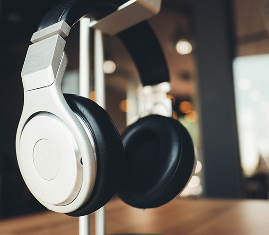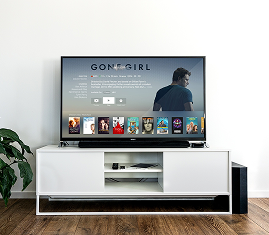Imagine watching a movie that completely captivates you visually, with stunning landscapes and breathtaking visuals. But then, the audio quality is poor, with muffled dialogue and inconsistent sound effects. Would the movie still be enjoyable? Probably not. That’s because audio plays a crucial role in our overall experience, influencing our emotions and immersing us in the story. In this article, we will explore the importance of balancing visual and sonic design, and how they work together to create a truly immersive and aesthetically pleasing experience.
Understanding the Concept of Audio Aesthetics
Defining audio aesthetics
Audio aesthetics refers to the intentional and deliberate design choices made in creating and presenting auditory experiences. It encompasses the harmonious combination of sounds, tones, and music, along with the visual aspects that accompany them. It is about creating an aesthetically pleasing and memorable experience through the use of sound, while also considering the overall visual and sensory elements that contribute to the design.
Importance of audio aesthetics in design
Audio aesthetics play a crucial role in design by enhancing the overall user experience and creating a more immersive and engaging environment. Whether it is in movies, video games, advertising, or any form of multimedia, audio aesthetics help convey emotions, communicate messages, and evoke specific responses in the audience. By carefully considering the auditory elements in design, designers can effectively capture and maintain the attention of users, making their experience more enjoyable and memorable.
The science behind audio aesthetics
The perception of sound is a complex process that involves both physiological and psychological aspects. When we hear a sound, our brains process various elements such as pitch, loudness, rhythm, and timbre, to create a meaningful auditory experience. These elements can evoke different emotional responses and shape our perception of the environment. Understanding the science behind audio aesthetics allows designers to make informed choices that can effectively influence and control the emotional and sensory impact of their designs.
Exploring the history and evolution of audio aesthetics
The concept of audio aesthetics has been present throughout history, although its importance and application have changed over time. In ancient times, sound was primarily used in rituals and ceremonies, with music playing a significant role in expressing emotions and conveying messages. With the advancement of technology, audio aesthetics became more prevalent in various forms of media, including radio, movies, and television. The evolution of audio aesthetics has been driven by advancements in sound production techniques and equipment, as well as the changing preferences and expectations of audiences. Understanding the history and evolution of audio aesthetics provides valuable insights into the current trends and future possibilities in design.
The Role of Visual Design in Audio Aesthetics
Influence of visual design on perceivers’ understanding of audio
Visual design plays a critical role in shaping the way we perceive and understand audio. When visual elements are combined with auditory elements, they can enhance or even alter our interpretation of sound. For example, a horror movie scene can be made more terrifying by combining eerie music with dark lighting, creating a visual and auditory synergy that intensifies the emotional impact on the audience. By strategically using visual design, designers can guide and influence the audience’s perception of sound, helping to effectively convey the intended message or evoke a specific emotional response.
Visual symbolism in audio design
Visual symbolism refers to the use of visual elements to represent or express abstract concepts or ideas. In audio design, visual symbolism can be used to reinforce or complement specific sounds or music. For instance, a visual representation of nature, such as a beautiful landscape, can be used to enhance the tranquility and calmness of a soothing melody. By carefully selecting and designing visual elements that align with the audio, designers can create a cohesive and immersive experience that resonates with the audience.
Effects of visual elements on auditory perception
Visual elements have the power to influence how we perceive and interpret auditory stimuli. Studies have shown that visual stimuli can affect our judgment of loudness, pitch, and even the perceived duration of sounds. For example, a visual depiction of a larger object can lead us to perceive a sound as louder or fuller. Similarly, a rapidly moving visual element can create the illusion of faster-paced music. By understanding and leveraging these effects, designers can manipulate the way listeners perceive and engage with audio, enhancing the overall aesthetic experience.
The interactive relationship between visual and auditory design
Visual and auditory design are not isolated elements but rather closely interconnected. They work in tandem to create a unified and comprehensive aesthetic experience. The visual design sets the stage for the auditory design, providing context and shaping expectations for the sounds that follow. Conversely, the auditory design can also influence the visual design, as specific sounds can trigger visual cues or associations. The interactive relationship between visual and auditory design is crucial in creating a cohesive and impactful experience that captivates the audience’s senses.
In-depth Look at Sonic Design
Understanding sonic design and its elements
Sonic design refers to the intentional arrangement of sound elements to create a desired auditory experience. It involves the careful selection and arrangement of sounds, such as music, dialogue, and ambient noise, to evoke specific emotions, convey messages, or enhance the overall aesthetic of a design. Sonic design elements include aspects such as pitch, rhythm, tempo, timbre, and spatial qualities, all of which contribute to the way we perceive and interpret sound.
Role of sonic design in conveying messages
Sonic design plays a vital role in conveying messages and creating a narrative within various forms of media. For example, in a film, the background music, sound effects, and dialogue all work together to create a specific atmosphere or evoke certain emotions in the viewers. In advertising, carefully chosen sound elements can help reinforce brand identity, communicate product attributes, and even trigger desired consumer behaviors. By leveraging sonic design, designers can effectively convey information and engage their audience on an emotional level.
Techniques in creating effective sonic design
Creating effective sonic design involves a combination of technical skills, creativity, and an understanding of the desired emotional and sensory impact. Techniques such as layering different sounds, adjusting volume and spatial effects, using appropriate instrumentation, and carefully timing sound cues can help create a dynamic and immersive auditory experience. In addition, the selection of music genres, musical motifs, and ambient soundscapes can contribute to the desired aesthetic and emotional response. By utilizing these techniques, designers can craft sonic designs that resonate with their audience and enhance the overall user experience.
Implication of sonic design on auditory perceptions
Sonic design influences the way we perceive and interpret sound by shaping our auditory perceptions. For example, the choice of instrumentation can evoke specific associations or cultural connotations. A deep and resonant voice may convey authority or power, while high-pitched sounds can create a sense of tension or urgency. Additionally, the use of spatial effects, such as panning sounds from left to right, can enhance the sense of depth and immersion. By understanding the implications of sonic design on auditory perceptions, designers can intentionally manipulate sound to achieve their desired aesthetic and emotional effects.
Balancing Visual and Sonic Design
Importance of visual-sonic balance in design
Achieving a balance between visual and sonic design is crucial in creating a cohesive and harmonious experience. When visual and sonic elements are in harmony, they work together to enhance the overall aesthetic and emotional impact of a design. A balanced design ensures that neither the visual nor the sonic elements overwhelm or distract from each other, but rather complement and support one another in creating a unified experience.
Effects of unbalanced visual and sonic design
Unbalanced visual and sonic design can have detrimental effects on the overall user experience. When one element dominates over the other, it can create a dissonance that detracts from the intended message or emotional response. For example, if the visual design is visually stunning but the sonic design is poorly executed or mismatched, it can lead to a disconnect between what is seen and what is heard, resulting in a less immersive and engaging experience. Conversely, an overpowering or distracting sonic design can overshadow or obscure important visual elements, leading to confusion or frustration for the audience.
Steps to achieve balance between visual and sonic elements
To achieve a balance between visual and sonic elements, designers should consider several factors. Firstly, they should closely collaborate with other experts involved in the design process, such as sound designers, composers, and visual artists or directors. By working together, they can ensure that the visual and sonic elements are aligned and reinforce each other’s impact. Secondly, designers should carefully consider the context and intended emotional response of their design. By understanding the overall narrative or brand message, they can make informed decisions about the visual and sonic elements that will best support and enhance the intended experience. Lastly, designers should regularly test and iterate their designs, gathering feedback from users or test audiences to ensure that the visual and sonic balance is effectively achieved.
Illustrating the balance through examples
To illustrate the importance of visual-sonic balance in design, let’s consider the opening sequence of a popular movie. In this sequence, the visual design may feature stunning cinematography and visually captivating images. However, without an accompanying sonic design that matches the pace, mood, and intensity of the visuals, the impact of the sequence may be diminished. By carefully selecting or composing a musical score that complements the visuals, using appropriate sound effects, and ensuring that the dialogue is clear and intelligible, the opening sequence can become a powerful and immersive experience that sets the tone for the rest of the movie. This example highlights how a balanced visual and sonic design can significantly enhance the overall aesthetic and emotional impact of a design.
Influence of Technology on Audio Aesthetics
Role of modern technology in shaping audio aesthetics
Modern technology has played a transformative role in shaping audio aesthetics, providing designers with new tools and possibilities for creating immersive and captivating auditory experiences. From advancements in recording and production techniques to the development of digital audio workstations, technology has significantly expanded the creative potential and accessibility of audio design. It has enabled the manipulation and synthesis of sounds in ways previously unimaginable, allowing designers to push the boundaries of sonic design and create unique and innovative experiences.
Impact of digital transformation on audio-visual design
The digital transformation has revolutionized audio-visual design, blurring the boundaries between traditional mediums and opening up new avenues for creativity. With the rise of digital platforms and streaming services, content creators have more opportunities to experiment with audio aesthetics and reach wider audiences. Additionally, the integration of audio and visual technologies, such as virtual reality and augmented reality, has further expanded the possibilities for immersive and interactive audio-visual experiences. The digital transformation has empowered designers to explore new approaches and push the boundaries of audio aesthetics.
Future trends in tech-oriented audio aesthetic designs
As technology continues to evolve at a rapid pace, several future trends can be anticipated in tech-oriented audio aesthetic designs. One such trend is the increased use of artificial intelligence and machine learning algorithms in audio design. These technologies have the potential to analyze vast amounts of audio data and generate custom soundscapes or music tailored to individual preferences or specific design requirements. Another trend is the integration of haptic feedback with audio design, enabling users to not only hear but also physically feel the sounds and vibrations. This convergence of technology and audio aesthetics will likely shape the future of design in exciting and unexpected ways.
Examples of tech-driven visual and sonic designs
Tech-driven visual and sonic designs are already prevalent in various industries. In the music industry, artists are using augmented reality and virtual reality technologies to create immersive and interactive music videos and live concert experiences. These technologies allow audiences to engage with music on a whole new level, blurring the lines between the virtual and physical worlds. In the gaming industry, advancements in spatial audio technologies and sound engines enable more realistic and immersive gaming experiences. These technologies provide players with a heightened sense of presence, as sounds accurately mimic real-world environments. These examples highlight how technology-driven visual and sonic designs are pushing the boundaries of audio aesthetics and revolutionizing the way we experience media.
Application of Audio Aesthetics in Various Industries
Influence of audio aesthetics in the music industry
Audio aesthetics play a central role in the music industry, shaping the way artists produce, record, and present their music. The choice of musical instruments, arrangements, and production techniques all contribute to the overall aesthetic of a song or album. By leveraging audio aesthetics, musicians can evoke specific emotions, create unique sonic signatures, and connect with their audience on a deeper level. Additionally, in the digital age, audio aesthetics are crucial in capturing and retaining listeners’ attention in an oversaturated market.
Implication of sonic and visual designs in filmmaking
In filmmaking, audio aesthetics are essential for creating an immersive and resonant cinematic experience. Sound designers carefully select and design sound effects, background music, and dialogue to bring scenes to life and enhance the emotional impact of storytelling. Visual design and cinematography work in tandem with sonic design, with both elements complementing and reinforcing each other. From the suspenseful strings in a horror movie to the triumphant orchestral score in an epic battle scene, audio aesthetics add depth and richness to the visual narrative.
Application of audio aesthetic principles in gaming
Audio aesthetics are fundamental to the gaming industry, as they contribute to the overall immersion and interactive experience of gameplay. Game designers use sound effects, music, and voice acting to create realistic and dynamic virtual environments. Sonic design can provide players with vital auditory cues, such as footsteps or gunfire, guiding their gameplay decisions. Additionally, audio aesthetics are crucial in building the atmosphere and emotional engagement of a game, creating memorable and captivating experiences for players.
Role of audio aesthetics in marketing and advertising
Audio aesthetics play a significant role in marketing and advertising by shaping consumer perceptions, evoking emotions, and enhancing brand identities. Effective audio branding and jingles can create strong associations between a brand and a particular sound, increasing brand recognition and recall. Sound design in commercials can capture attention, create emotional resonance, and influence consumer behavior. By carefully considering audio aesthetics in marketing and advertising, brands can create compelling and memorable experiences that leave a lasting impact on consumers.
Psychological Impact of Audio Aesthetics
How audio aesthetics affect human emotions
Audio aesthetics have a powerful impact on human emotions, eliciting a wide range of responses and influencing our overall mood and perception of a design. Studies have shown that specific sounds or music can evoke emotions such as joy, sadness, fear, or excitement. For example, upbeat and fast-paced music may elicit feelings of happiness and energy, while slow and melancholic melodies can evoke feelings of nostalgia or sadness. By understanding the emotional impact of audio aesthetics, designers can intentionally craft auditory experiences that align with their desired emotional response.
Psychology behind audio-visual perception
The psychology behind audio-visual perception explores how our brain integrates and processes sensory information from both auditory and visual modalities. When auditory and visual elements are presented simultaneously, they can influence and enhance each other’s impact on our perception and interpretation of the environment. This integration, known as multisensory processing, can lead to a more robust and cohesive perceptual experience. By understanding the underlying psychological mechanisms, designers can leverage audio-visual perception to create more engaging and meaningful designs.
Empirical studies on audio aesthetics and psychology
Numerous empirical studies have been conducted to investigate the relationship between audio aesthetics and psychology. These studies have provided valuable insights into how sound influences emotions, cognition, and behavior. For example, research has shown that background music can affect the perceived waiting time in a queue or influence consumer purchasing decisions. Studies have also explored the impact of specific musical elements, such as tempo or key, on emotional responses. By building upon these findings, designers can make informed decisions about sonic design that align with the desired psychological effects.
Impacts of audio aesthetics on consumer behaviors
Audio aesthetics can have profound effects on consumer behaviors, influencing purchasing decisions, brand perception, and overall user engagement. By strategically leveraging audio aesthetics, such as through the use of catchy jingles, memorable sound logos, or emotionally resonant music, brands can create associations and emotional connections with their target audience. Additionally, studies have shown that well-designed sonic interfaces can improve user engagement and satisfaction with digital products. By considering the psychological impacts of audio aesthetics, designers can create designs that effectively influence and shape consumer behaviors.
Exploring Cultural Diversity in Audio Aesthetics
Diverse interpretations of audio aesthetic elements across cultures
Audio aesthetic elements can be interpreted and valued differently across cultures, reflecting the diverse perspectives and cultural values of different societies. For example, certain musical instruments or melodies may have strong cultural associations or carry specific meanings in one culture but may be perceived differently in another. Understanding cultural diversity is essential in creating inclusive and culturally sensitive audio aesthetics that resonate with diverse audiences.
Influence of culture on sonic designs
Culture plays a significant role in shaping sonic designs, as it influences the musical preferences, styles, and interpretations prevalent in different societies. For example, the use of specific musical scales or rhythmic patterns may be indicative of a particular culture’s musical traditions. Furthermore, cultural factors such as language, dialects, and accents can also impact the sonic design, as they shape the choice of voice actors or the clarity and intelligibility of dialogue. By considering cultural influences on sonic design, designers can create experiences that are respectful and appealing to specific audiences.
Cross-cultural communication through audio aesthetics
Audio aesthetics can serve as a powerful tool for cross-cultural communication, as they transcend language and cultural barriers. By using universal elements such as rhythm, melody, or emotional cues, designers can create audio experiences that resonate with diverse audiences. Additionally, through the intentional fusion or juxtaposition of different cultural musical traditions or styles, designers can create hybrid audio aesthetics that promote cultural exchange and understanding.
The effect of globalization on audio aesthetics
Globalization has had a significant impact on audio aesthetics, as it has facilitated the exchange and blending of musical styles, influences, and cultural expressions. Modern audio aesthetics often draw from various cultural traditions and incorporate elements from different parts of the world. This blending of cultural influences has resulted in the emergence of new genres and styles, as well as the reinterpretation of traditional music. Globalization has expanded the possibilities for cultural diversity in audio aesthetics, offering designers a broader range of inspirations and opportunities for creativity.
Challenges and Solutions in Audio Aesthetic Design
Identifying common hurdles in crafting aesthetically pleasing audio
Crafting aesthetically pleasing audio can be challenging due to various factors. One common hurdle is the subjective nature of aesthetics, as what one person finds pleasing may not be the case for another. Additionally, technical limitations, such as budget constraints or resource limitations, can impact the ability to create high-quality audio design. Lastly, the ever-evolving nature of technology and design trends can present challenges in staying current and effectively integrating new tools and techniques into audio aesthetic design.
Practical solutions to design challenges
Overcoming design challenges in audio aesthetics requires a combination of creativity and practical problem-solving. One solution is to establish a clear vision and set specific design goals from the beginning. By defining the desired aesthetic and the emotional impact the design aims to achieve, designers can make informed decisions and overcome potential roadblocks. Collaboration and effective communication with other design professionals, such as sound engineers or visual artists, can also help address challenges and ensure a cohesive and harmonious design. Lastly, continuously seeking feedback and testing the design with target audiences can identify areas for improvement and inform iterative design processes.
Expert tips for enhancing audio aesthetic design
Experts recommend several tips for enhancing audio aesthetic design. Firstly, understanding the target audience and their preferences is essential, as this knowledge can guide the design decisions and ensure relevance and appeal. Secondly, actively exploring and experimenting with different sonic elements, instruments, and recording techniques can result in unique and captivating designs. Thirdly, carefully considering the context and intended emotional response of the design can help select appropriate sonic elements and arrangements. Lastly, regularly seeking feedback from peers, professionals, and target audiences can provide valuable insights and perspectives that can enhance the overall design.
Case studies on successful overcome design challenges
Numerous case studies showcase successful approaches to overcoming design challenges in audio aesthetics. For example, in the development of a video game, a design team faced the challenge of creating a dynamic and immersive soundscape within technical limitations. By carefully selecting and implementing strategic sound cues, utilizing procedural audio techniques, and collaborating closely with the development team, the designers created an engaging and immersive audio experience. This case study highlights how a combination of creative problem-solving, collaboration, and cutting-edge techniques can lead to successful design outcomes.
The Future of Audio Aesthetics
Predicting trends in audio aesthetic design
The future of audio aesthetics is full of exciting possibilities. As technology continues to advance, designers can expect to explore new frontiers in sound design, such as immersive audio formats, advanced spatial audio techniques, and personalized audio experiences tailored to individual preferences. Additionally, the integration of audio aesthetics with emerging technologies, such as virtual reality and augmented reality, will likely create groundbreaking and transformative experiences that redefine the boundaries of design.
Impact of virtual reality and artificial intelligence on sonic design
Virtual reality (VR) and artificial intelligence (AI) are poised to have a significant impact on sonic design. VR technologies enable designers to create fully immersive and spatially accurate audio environments, transporting users to virtual worlds that feel indistinguishable from reality. AI technologies, on the other hand, can analyze vast amounts of audio data and generate custom soundscapes or music in real-time, tailoring the auditory experience to individual users or specific contexts. The combination of VR and AI is likely to revolutionize sonic design, offering unprecedented levels of personalization and immersion.
Potential changes in the perception of audio aesthetics
With the advancement of technology and the growing prevalence of audio-visual media, the perception of audio aesthetics is likely to evolve. As audiences become more immersed in highly realistic and interactive audio experiences, they may develop higher expectations for the quality and creativity of sonic design. Additionally, as audio aesthetics become more customizable and personalized, users may come to expect tailored auditory experiences that align with their individual preferences and moods. These changes in perception will likely drive designers to continually innovate and push the boundaries of audio aesthetics.
The role of innovation in shaping the future of audio aesthetics
Innovation will play a crucial role in shaping the future of audio aesthetics. Designers will need to constantly explore new technologies, techniques, and approaches to create fresh and captivating audio experiences. From leveraging AI algorithms to generate custom soundtracks in real-time to creating hybrid audio aesthetics that blend cultural traditions, innovation will drive the evolution of audio aesthetics. By embracing new possibilities and pushing the limits of creativity, designers can shape a future where audio aesthetics continue to captivate, engage, and inspire audiences.
In conclusion, audio aesthetics are a pivotal aspect of design, influencing how we perceive and interpret sound in various forms of media. By understanding the concept of audio aesthetics, the role of visual design, the intricacies of sonic design, the balance between visual and sonic elements, the impact of technology, and the application in different industries, designers can create compelling and captivating experiences. By considering the psychological impact, cultural diversity, and challenges in audio aesthetic design, designers can navigate the complexities and embrace innovative approaches. With the future of audio aesthetics presenting exciting technological advancements, the role of innovation will shape the evolving landscape of audio aesthetics.










